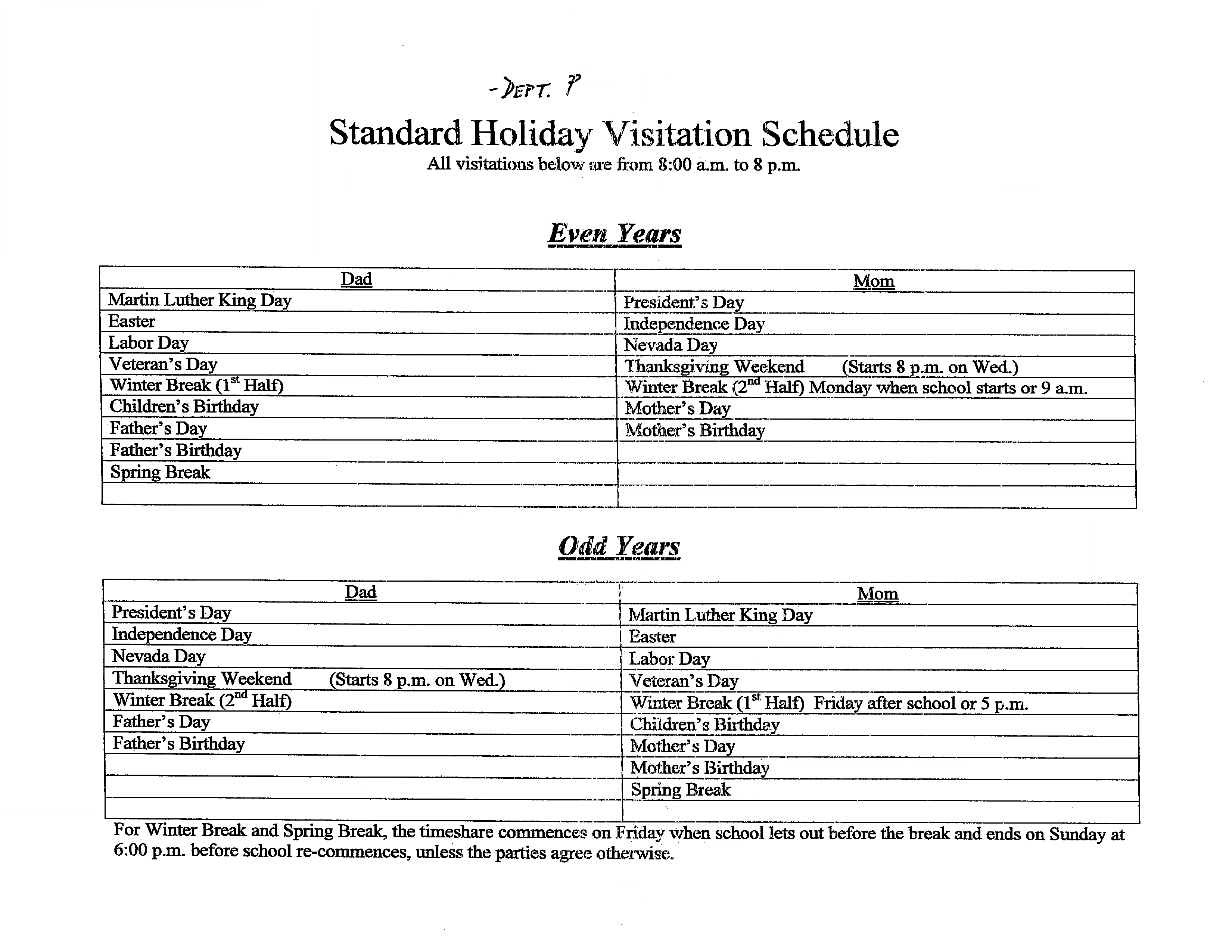When parents separate or divorce, one of the most important aspects to consider is creating a visitation schedule for the children. A visitation schedule outlines when and where each parent will have parenting time with their children. It helps maintain stability, predictability, and consistency for both the parents and the children.
In this article, we will guide you through the process of creating a visitation schedule, providing you with all the necessary information and tips to ensure a smooth transition for everyone involved.
What is a Visitation Schedule?
A visitation schedule is a document that outlines the specific times and dates when a non-custodial parent will have parenting time with their children. It is typically part of a parenting plan, which is a comprehensive document that covers all aspects of co-parenting, including decision-making, communication, and visitation. The visitation schedule ensures that both parents have ample time with their children while also considering the children’s best interests.
When creating a visitation schedule, there are several factors to consider. Each family’s situation is unique, and the schedule should reflect the specific needs and circumstances of the parents and children involved. Some key considerations include:
- The age and developmental stage of the children
- The geographical distance between the parents’ residences
- The parents’ work schedules and availability
- The children’s school and extracurricular activities
- The parent’s ability to communicate and co-parent effectively
Why is a Visitation Schedule Important?
A visitation schedule is important for several reasons. Firstly, it provides structure and routine for the children. Going through a separation or divorce can be a challenging time for children, and having a predictable schedule can help them feel more secure and stable. Secondly, it ensures that both parents have regular and consistent contact with their children, promoting a healthy parent-child relationship. Lastly, a visitation schedule can help prevent conflicts and misunderstandings between the parents by clearly defining the expectations and boundaries for each parent’s parenting time.
How to Create a Visitation Schedule
Creating a visitation schedule requires careful consideration and open communication between the parents. Here are some steps to guide you through the process:
1. Assess the Needs of Your Children
The first step is to assess the needs and preferences of your children. Consider their age, school schedule, extracurricular activities, and any other factors that may impact their availability for visitation. It’s essential to prioritize their best interests and ensure that the schedule is tailored to meet their specific needs.
2. Communicate with the Other Parent
Open and honest communication with the other parent is crucial when creating a visitation schedule. Discuss your respective work schedules, commitments, and any other factors that may affect your availability for parenting time. Be willing to compromise and find solutions that work for both parents and prioritize the children’s well-being.
3. Consider the Logistics
When creating a visitation schedule, you need to consider the logistics, such as the distance between the parents’ residences and transportation arrangements. If the parents live far apart, you may need to incorporate longer visitation periods to accommodate travel time. Additionally, consider who will be responsible for transportation and how it will be arranged.
4. Be Flexible
Flexibility is key when creating a visitation schedule. Life is unpredictable, and circumstances may change over time. It’s important to build flexibility into the schedule to allow for adjustments when needed. Both parents should be willing to accommodate changes in the schedule due to work commitments, special occasions, or any other unforeseen circumstances.
5. Document the Schedule
Once you have agreed on a visitation schedule, it’s important to document it in writing. This provides clarity and prevents misunderstandings or disputes in the future. Include specific dates, times, and locations for each parenting time. Share a copy of the schedule with the other parent and keep a copy for yourself.
6. Review and Revise as Needed
A visitation schedule is not set in stone. As your children grow older or circumstances change, you may need to review and revise the schedule. Regularly communicate with the other parent and be open to making adjustments that better suit the changing needs of your children.
Sample Visitation Schedule
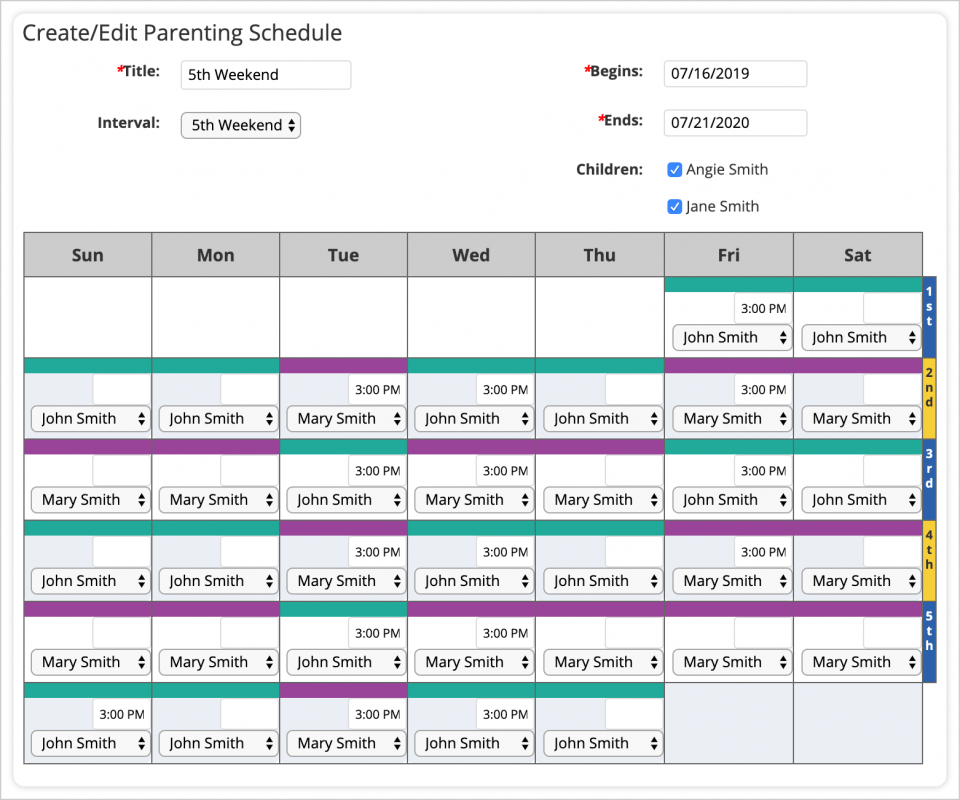
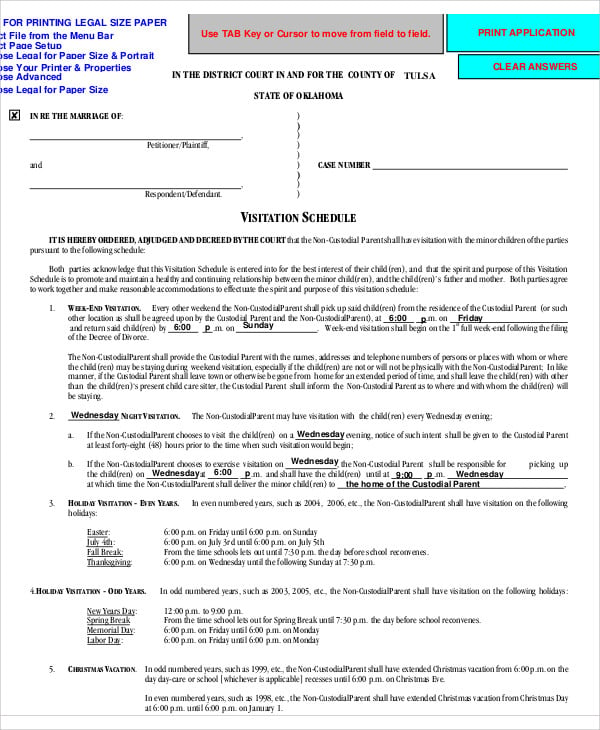
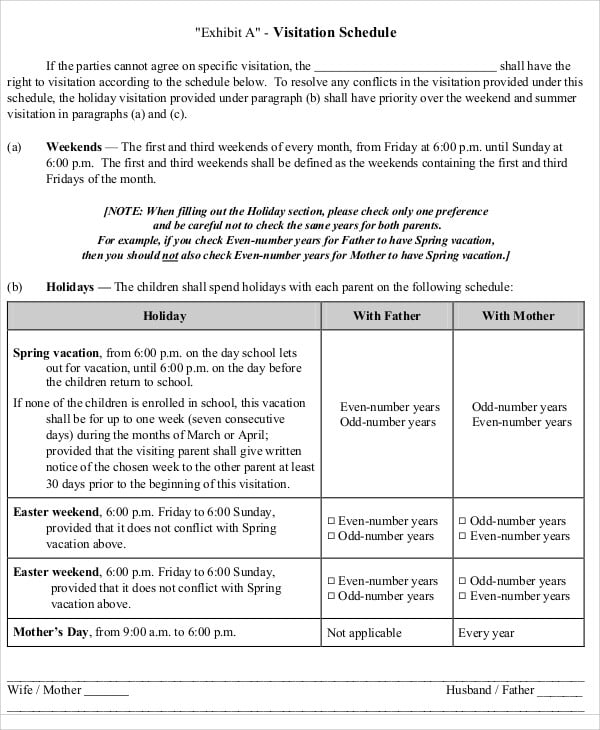
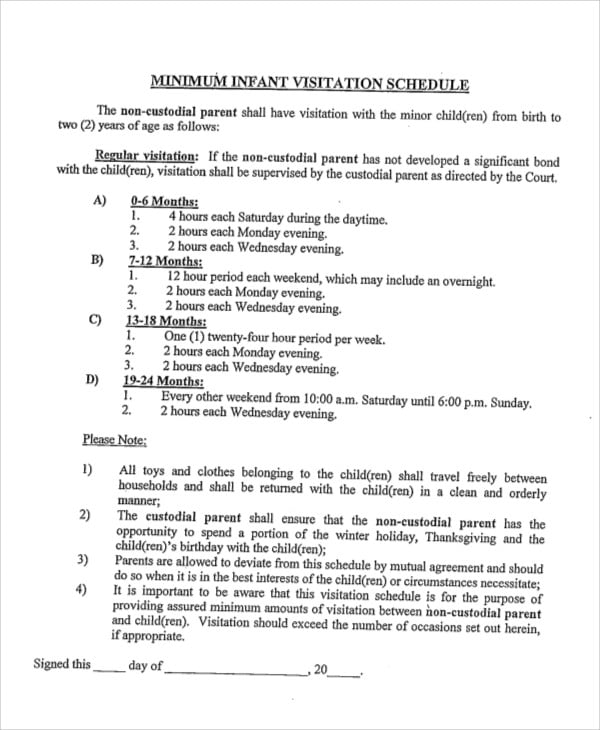
Here’s an example of a visitation schedule that can serve as a starting point for creating your own:
- Week 1: Parent A has parenting time from Friday after school until Sunday evening
- Week 2: Parent B has parenting time from Friday after school until Sunday evening
- Weekdays: Parent A has parenting time on Mondays and Wednesdays from after school until 8:00 PM
- Weekdays: Parent B has parenting time on Tuesdays and Thursdays from after school until 8:00 PM
- Holidays and special occasions are alternated between the parents
- Summer break: Parent A has parenting time for the first half, and Parent B has parenting time for the second half
Conclusion
Creating a visitation schedule is an important step in the co-parenting journey. It helps provide stability and consistency for children while ensuring that both parents have ample time with their children. By considering the needs of the children, communicating effectively with the other parent, and being flexible, you can create a visitation schedule that works for everyone involved. Remember that the schedule may need to be reviewed and revised over time to accommodate changing circumstances. By prioritizing the best interests of the children, you can create a visitation schedule that promotes a healthy and nurturing environment for them.
Visitation Schedule Template – Download
